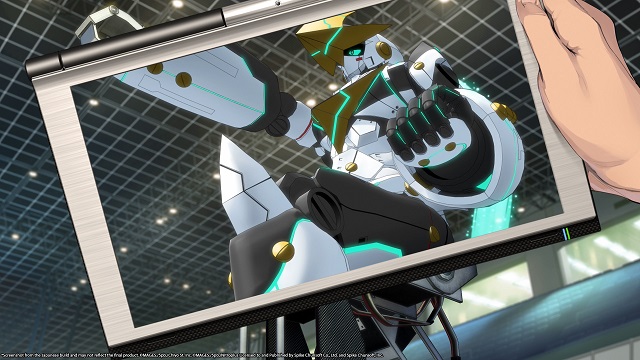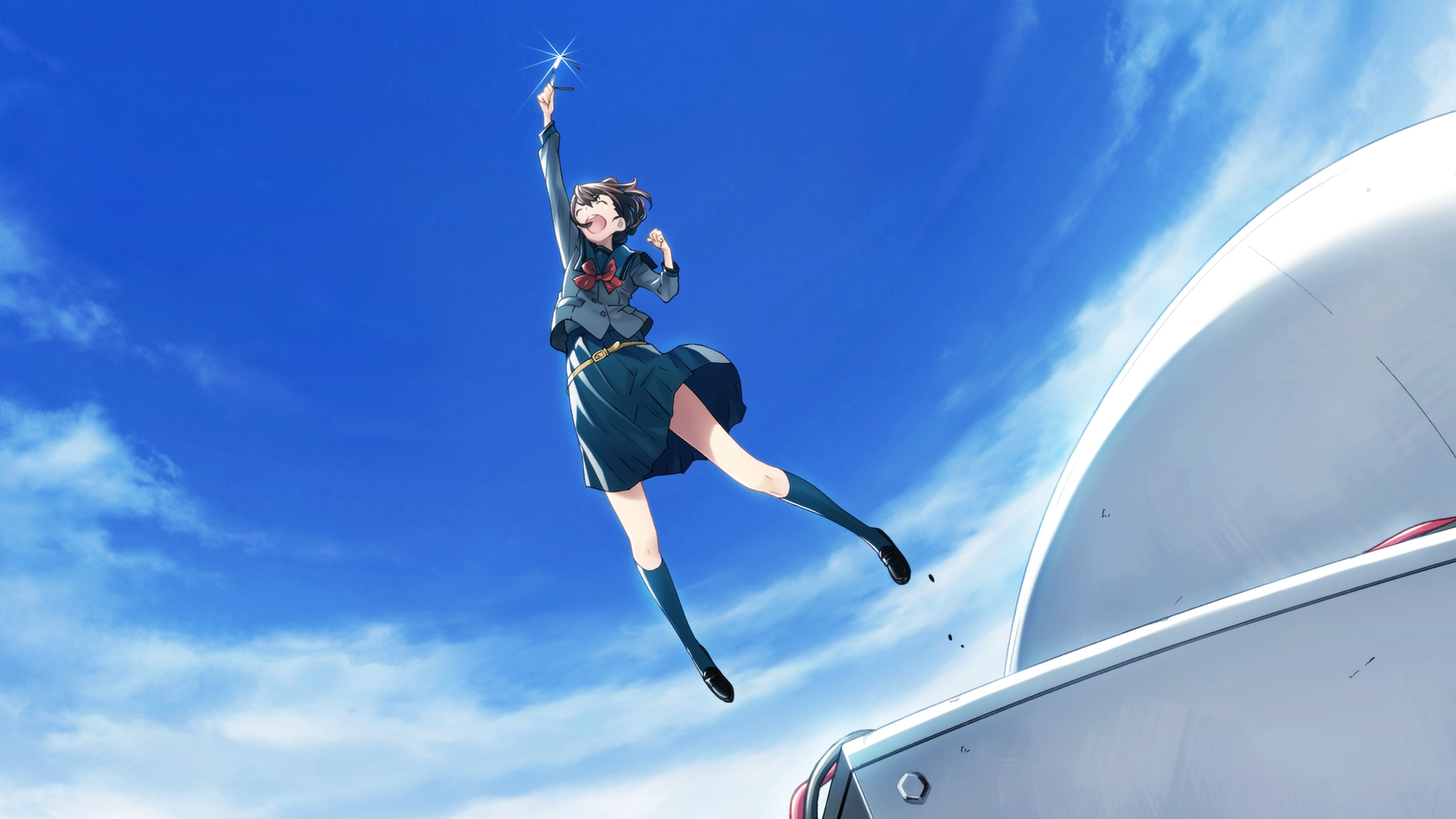The latest entry in 5pb.’s Science Adventure series is finally in western territories, in the form of Robotics;Notes Double Pack. It contains the first game, Robotics;Notes ELITE, and its sequel, Robotics;Notes DaSH.
To maximize your experience with Robotics;Notes, especially with DaSH, it’s imperative that you play both previous localized entries in the series, Steins;Gate and Chaos;Child beforehand.
Robotics;Notes ELITE & DaSH Review: Hopes and Dreams Can Save the World
Robotics;Notes ELITE follows a group of young school kids in danger of having their robotics club disbanded. To prevent that, the club comes together to complete its giant robot.
The club starts off with just two members. Kaito Yashio, who is largely apathetic to the Robot Research Club’s goals and just wants to play video games all day, and Akiho Senomiya, the club president, who absolutely loves robots and wants to do everything she can to make sure the robot gets built.
Kaito is the main perspective here, and it’s certainly interesting to see the main character be so uninterested in the club. However, as the story progresses, you’ll see how his motivations change, especially as he gets entangled in a global conspiracy theory.
Gameplay minimalism

The format for Robotics;Notes sticks very traditionally to its visual novel roots, where you’re mostly pressing the confirm button to go through massive amounts of dialogue. The gameplay elements are pretty light, especially compared to similar titles in the genre.
Kaito has a PhoneDroid, a smartphone that has augmented reality abilities. Through that, Kaito can access geotags, which are bits of data attached to certain objects or landmarks throughout the setting of Tanegashima. These primarily function as ways for players to look around and learn more about the game’s world.
Additionally, Kaito can interact with Twipo, which is the universe’s social media platform. Through replying to certain posts, Kaito can unlock new routes in the game’s story that ultimately lead to the game’s final ending.
Kaito’s favorite game, Kill-Ballad, consists of quick-time events rather than any actual gameplay. During story events, Kaito will challenge other characters to a battle, and a series of QTEs will appear on-screen for the player to pass.
Science Adventure Universe
Robotics;Notes ELITE is a slower burn than Steins;Gate and even Chaos;Child. The bits and pieces of the conspiracy theory plot start coming together while the main cast of characters works to finish its robot. The payoff is very much worth it, but that’s also where the story’s biggest fault lies.
Whereas Steins;Gate starts getting tense a little past the halfway point in its story, the tension doesn’t really start snowballing in Robotics;Notes ELITE until the last two or three chapters. For some players, it might feel like a chore to get to those last few chapters compared to Steins;Gate.
However, I really appreciate the much more grounded approach that Robotics;Notes takes in terms of its story, especially compared to Chaos;Child. As a result, when the world and conspiracy theory are explained in Robotics;Notes, it seems much more believable and doesn’t present such a jarring shift in lore that’s felt in Chaos;Child‘s more fantastical elements.
The sequel is for the hardcore fans
Robotics;Notes DaSH takes place about six months after the first game and sees the return of Daru, one of the protagonists in Steins;Gate. This is undoubtedly a huge draw, as his inclusion explores how Robotics;Notes as a whole connects to the overall Science Adventure universe.
While it is a sequel, a large portion of DaSH feels like a fandisc. You can pursue different routes that focus on each main character from ELITE, and they actually provide a fair amount of character development. It’s a shame that they’re seemingly non-canon, judging by the calendar date of the events during these character episodes.
They all take place around the same time period, so there’s no feasible way that every single episode can take place at once. As a result, the character episodes don’t really move the needle on the main plot itself. DaSH is as much of a slow burn as ELITE is since you can only access Daru’s storyline, which is the canon path in DaSH, after you complete all of the previous character episodes
Daru’s path is the highlight of DaSH, and the last few chapters are just as explosive as ELITE’s. Though it’s important to note that it borrows more from Chaos;Child’s lore than from Steins;Gate’s, which is kind of odd since he originated from the latter title.
Which is better, 3D Girls or 2D Girls?
As for presentation, both Robotics;Notes ELITE and DaSH utilize 3D anime models instead of the 2D cutouts that previous entries in the series used. They’re much more expressive and dynamic. Depending on the dialogue, several characters can appear on the screen at once, and the models will sometimes have their backs turned to you.
The way these 3D models are used creates a much more engaging experience, and I was surprised at how not-creepy they looked.
The soundtrack is fantastic as well. Takeshi Abo’s score is able to capture both the upbeat slice-of-life school anime feeling while also providing some tension during Robotic; Notes’ darker moments.
One persistent issue with each game is direction after you’ve completed a path by reaching a certain ending. Like many visual novels, there are triggers in both ELITE and DaSH that need to be activated to unlock paths to different endings.
In ELITE, it seems like different Twipo responses activate flags for branching paths in the narrative. In DaSH, it’s even more ambiguous, as it seems like you have to visit locations in a specific order to unlock the paths for the various characters.
This makes playing without some sort of streamlined step-by-step walkthrough pretty frustrating, or else you’re just going to be endlessly guessing at what triggers what. Luckily, the game has been out in Japan for a while, so it’s not difficult to find a translated guide.
Robotics;Notes ELITE & DaSH Review — The Bottom Line
Pros
- Strong plot and characters
- Fantastic presentation in visuals and sound
Cons
- Story takes a long time to pay off
- Finding triggers for branching story paths is confusing
Fans of the Science Adventure series, and visual novels in general, will enjoy Robotics;Notes ELITE. While it doesn’t quite reach the incredibly soaring highs of Steins;Gate, it is more enjoyable than the underwhelming Chaos;Head.
Adding DaSH into the mix only increases the overall package here. Both plots are intriguing and the characters are likable. Anyone who is looking for a lighthearted adventure about hope and achieving their dreams will find exactly that in Robotics;Notes ELITE and DaSH.
[Note: Spike Chunsoft provided the copy of Robotics;Notes ELITE & DaSH used for this review.]











Published: Oct 4, 2020 11:38 pm